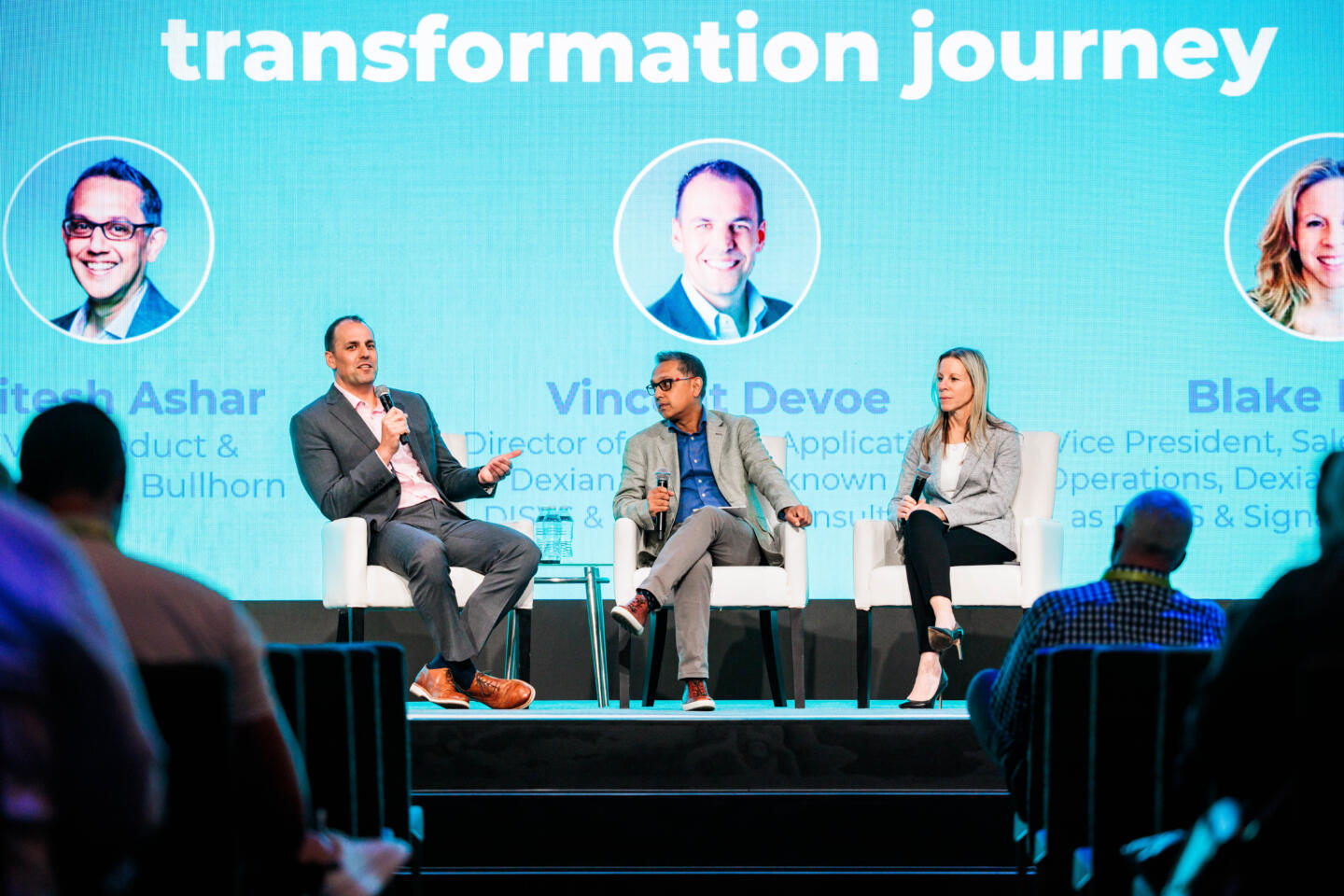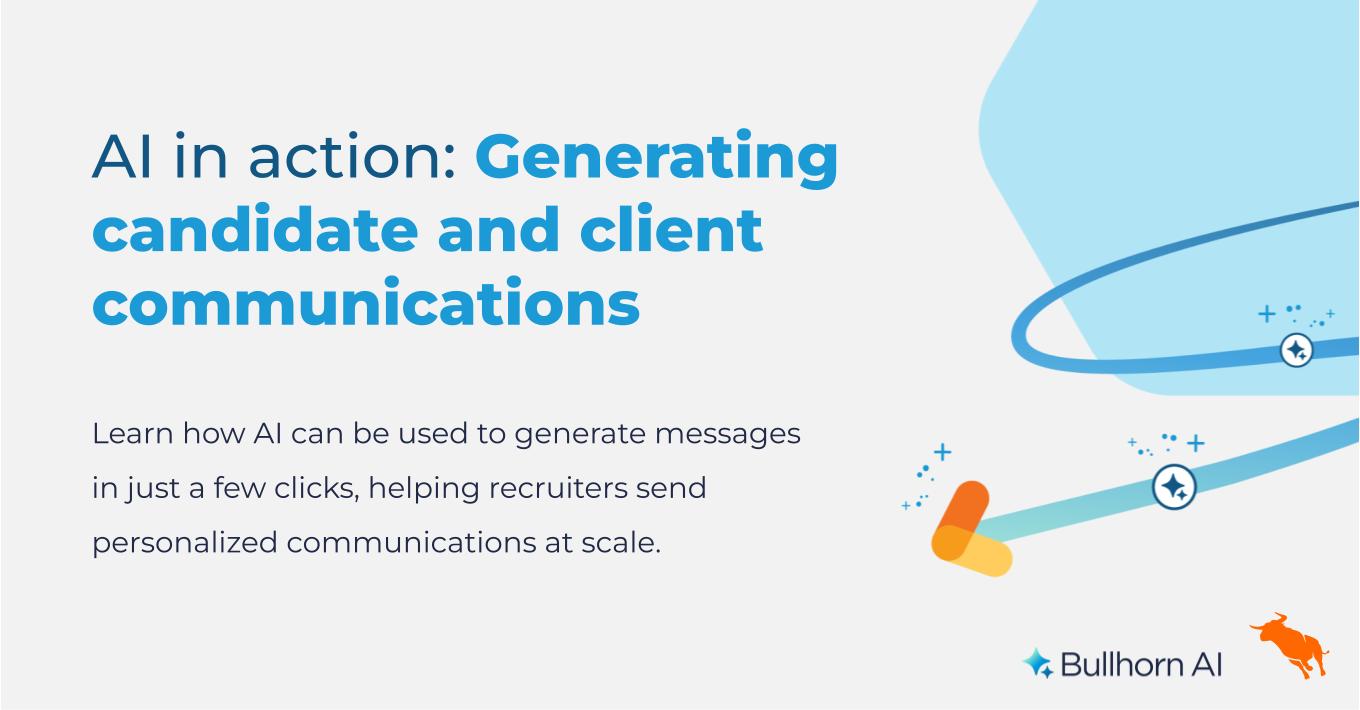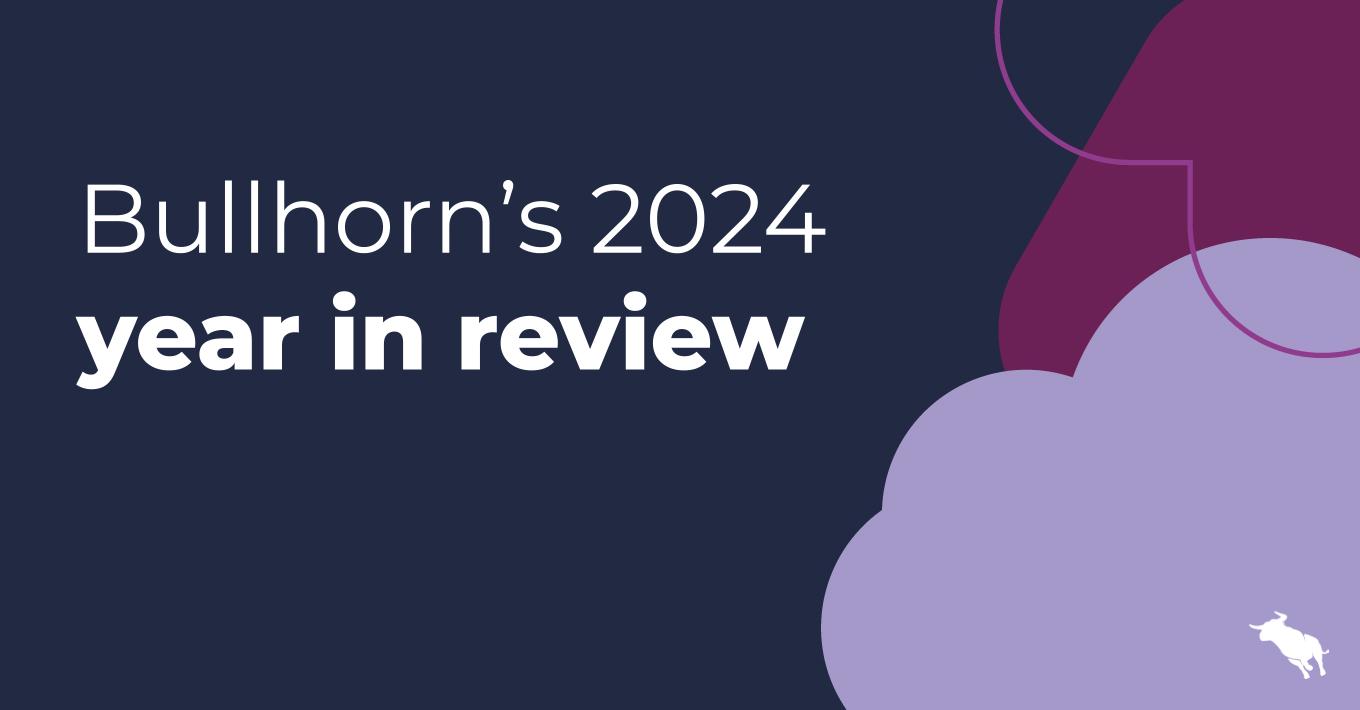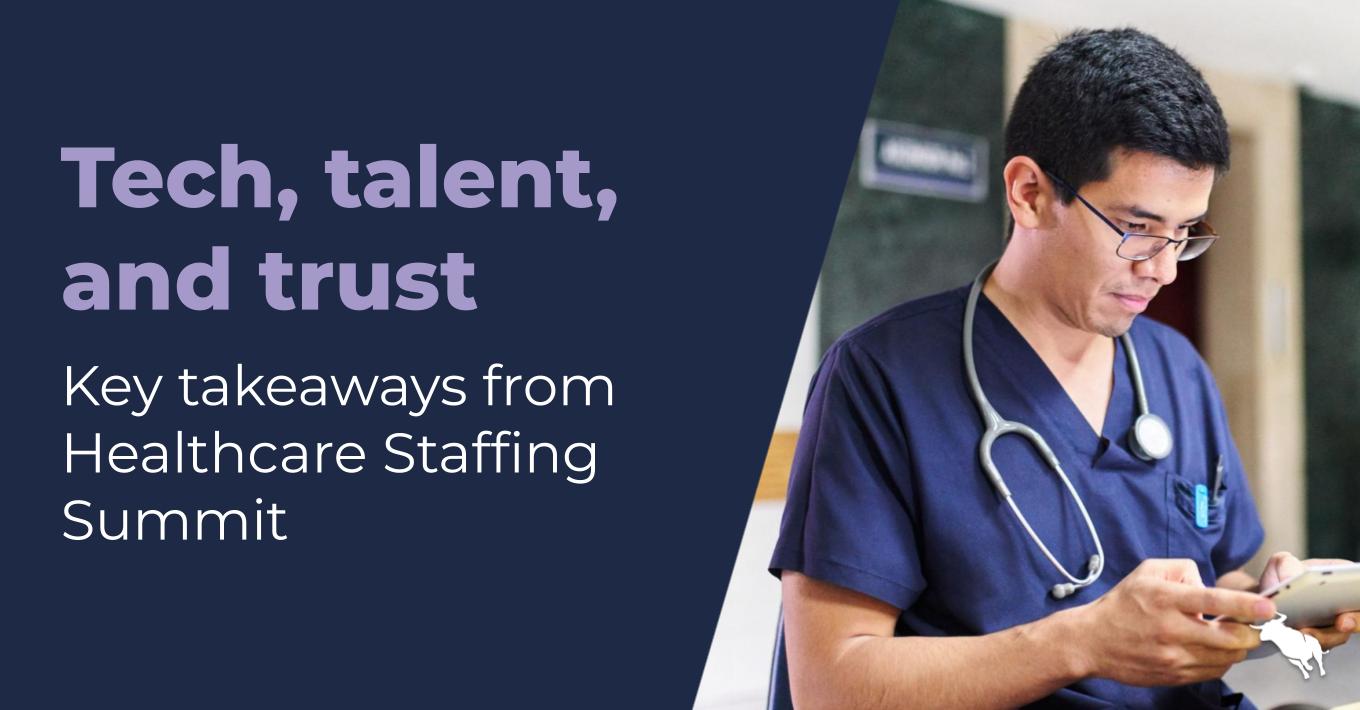Successfully navigating the digital transformation journey

The drive toward digital transformation in the staffing industry continues to gain speed, with digitized data quickly becoming the rule instead of the exception. In our 2023 GRID Industry Trends Report, for the first time, digital transformation came in as the #2 overall priority among the firms surveyed. But our study also revealed that many companies are still early in their adoption and struggling to implement automated processes to accelerate their candidate and client engagement.
So, what are the keys to a smooth and successful digital transformation? How do you establish priorities, manage change, and ensure adoption? And how do you avoid getting derailed along the way?
At Engage Boston 2023, Bullhorn’s Mitesh Ashar, EVP, Product & Operations, posed these and other questions to two leaders at IT and professional staffing company Dexian (formerly known as DISYS & Signature Consultants): Blake Harris, Vice President, Sales and Recruiting Operations, and Vinnie Devoe, Director of Business Applications.
Read on for a recap of their conversation, and check out the Bullhorn Engage Content Hub for more from this year’s event.
From consolidation to alignment
In 2021, DISYS and Signature Consultants merged, becoming one of the largest IT and professional staffing and solutions companies in the United States. Following the merger, the two companies did a full evaluation of their respective tech stacks, looking at overlaps and gaps, and ensuring that they had the right tools in place to meet their business objectives. The next step in the journey was to consolidate the two companies’ systems—a major undertaking.
Now, post-consolidation, with DISYS and Signature operating under one roof as Dexian, the company is focused on achieving alignment in its workflows and processes. That includes looking at the entire experience journey across all parties involved: candidates, clients, and internal employees. As Devoe explained, “We’re identifying where the gaps are, and then we’ll start looking at newer technologies that could improve that experience across the board.”
Harris emphasized that all of the changes and improvements the company is making are fully aligned with their business priorities, as articulated by executive leadership. So, when the field requests new automations or features, her team evaluates them through that lens. “When you align to your company’s priorities, everything falls into place,” Harris said. “But if it’s something that’s going to take us sideways, we know not to focus in that area.”
Changing the game with Bullhorn Automation
Many of the improvements Dexian has made over the previous few years are the result of leveraging automation. Data cleansing, including closing out old jobs, is one area where automation has been incredibly useful. Now, when a job is getting old, an email will automatically go out to the salesperson, alerting them that the job will be closed unless they take action.
Automation has made an even bigger impact for the company on the nurturing and redeployment front. Now, the workflow automatically sends out reminders when job end dates are approaching or when nobody has been in touch with a candidate in a given amount of time. “We’re constantly staying ahead of things, so we can identify who’s eligible for redeployment and move them onto the right list and get them their next opportunity,” said Blake. Using automation in this way, the company was able to drive its redeployment rate up to 35% last year.
Dexian has been able to leverage other capabilities in the Bullhorn platform as well. One example is customizing page and field interactions so that users are forced to enter complete and accurate data and don’t have to be chased down for that information later. “Between Bullhorn Automation and the ability to build your own field and page interactions,” Devoe said, “there really isn’t anything that we haven’t been able to do.”
Driving adoption by starting early
Even the smartest improvements to your systems and workflows won’t pay off if nobody uses them. Managing change and driving adoption are always challenging, but the key, Harris and Devoe agree, is starting at the top: “We introduce the change to leadership first—this is the ‘what,’ this is the ‘why,’—and we get their buy-in,” Harris said. “We need that because it will go down from there to the field.” She also emphasized the importance of thinking through the potential downstream effects of any changes and making sure that all relevant groups understand what’s ahead and how it will affect their work.
Dexian is fortunate to have someone in a dedicated change management role, and they make sure that person is involved as early as possible when they’re making changes to workflows or implementing new features. Harris said they also start preparing training materials early in the process, taking screenshots while still in the production environment, and letting leaders see the training materials first. From there, the change management role is responsible for making sure the field understands the changes and is fully trained.
Harris also addressed one of the common questions staffing firms have about training: how do you make sure that what employees learn actually “sticks”? Having a good learning and development team, she said, is a key part of it. “[Our team] is all about how people learn and how many times they need to see something or read something and the different ways that they digest it.” Providing training in multiple modalities is important, both she and Devoe said, since people learn in different ways. Some might prefer watching videos or attending webinars, while others might prefer written instructions or a job aid they can print out and keep by their desk.
Using a roadmap to staying on track
For Dexian, the number one key to successful digital transformation is having a plan—and sticking to it. It’s very basic, but having a technology roadmap that aligns with your company priorities is critical,” said Devoe. “You use it for three things: planning, prioritization, and communication.” The communication piece, he said, is especially important. A roadmap allows him to show both leadership and people in the field what’s on the docket and what the plan is for the next two years, laying the groundwork for successful adoption.
Having a roadmap also helps teams stay disciplined along the way. With clearly defined goals and a big-picture perspective, teams are less likely to get bogged down by requests or distracted along the way by the latest and greatest thing to come down the road. Harris advised, “If it’s not on that roadmap, if it’s not aligned to your priorities, don’t get derailed.”
At the same time, Devoe pointed out, a roadmap is a dynamic document. When new needs surface or priorities shift—as they inevitably do—the roadmap allows you to visualize what those changes will look like and the impact they will have on the plan as a whole.
Don’t get comfortable
Dexian has made huge strides in its digital transformation journey over the past three years, laying the foundation for more improvements going forward. The next step for them will be learning more about what’s available on the Bullhorn platform as well as through the Marketplace, then researching, demo-ing, selecting, and implementing the products and tools that serve their business priorities.
The key, Devoe says, is to keep moving forward. His advice: “Don’t stop looking at what you can change. Don’t get comfortable. When you have something good, you can keep making it better. If it’s really critical for your business, always be looking to enhance it.”
Looking for more insights from Engage Boston 2023? Check out our Content Hub for recaps, videos, and more from this year’s event.








